Naphthalenebisimides as photofunctional surfactants for SWCNTs - towards water-soluble electron donor-acceptor hybrids
- PMID: 28757977
- PMCID: PMC5510015
- DOI: 10.1039/c5sc02944a
Naphthalenebisimides as photofunctional surfactants for SWCNTs - towards water-soluble electron donor-acceptor hybrids
Abstract
A water soluble naphthalenebisimide derivative (NBI) was synthesized and probed to individualize, suspend, and stabilize single wall carbon nanotubes (SWCNTs). Besides a comprehensive photophysical and electrochemical characterization of NBI, stable suspensions of SWCNTs were realized in buffered D2O. Overall, the dispersion efficiency of the NBI surfactant was determined by comparison with naphthalene based references. Successful individualization of SWCNTs was corroborated in several microscopic assays. In addition, emission spectroscopy points to the strong quenching of SWCNT centered band gap emission, when NBIs are immobilized onto SWCNTs. The origin of the quenching was found to be strong electronic communication, which leads to charge separation between NBIs and photoexcited SWCNTs, and, which yields reduced NBIs as well oxidized SWCNTs. Notably, electrochemical considerations revealed that the energy content of these charge separated states is one of the highest reported for SWCNT based electron donor-acceptor hybrids so far.
Figures



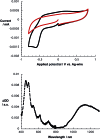
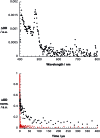

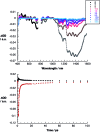

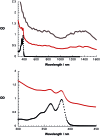

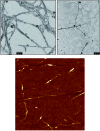
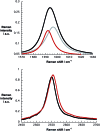
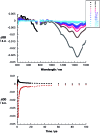


Similar articles
-
Amphiphilic Zinc Porphyrin Single-Walled Carbon Nanotube Hybrids: Efficient Formation and Excited State Charge Transfer Studies.Small. 2021 Dec;17(48):e2005648. doi: 10.1002/smll.202005648. Epub 2021 Jan 18. Small. 2021. PMID: 33458948
-
Multimodular Wide-Band Capturing Nanohybrids: Role of Carbon Nanotubes in Slowing Charge Recombination in Supramolecular C60-BisstyrylBODIPY-(Zinc Porphyrin)2 Donor-Acceptor Molecular Cleft.J Am Chem Soc. 2024 May 15;146(19):13509-13518. doi: 10.1021/jacs.4c02972. Epub 2024 May 6. J Am Chem Soc. 2024. PMID: 38710108
-
Fluorescence quenching of dyes covalently attached to single-walled carbon nanotubes.J Phys Chem A. 2011 Sep 1;115(34):9579-84. doi: 10.1021/jp200152z. Epub 2011 Jul 18. J Phys Chem A. 2011. PMID: 21766814
-
High population of individualized SWCNTs through the adsorption of water-soluble perylenes.J Am Chem Soc. 2009 Feb 18;131(6):2172-84. doi: 10.1021/ja805660b. J Am Chem Soc. 2009. PMID: 19170496
-
Comparison of the quality of aqueous dispersions of single wall carbon nanotubes using surfactants and biomolecules.Langmuir. 2008 May 6;24(9):5070-8. doi: 10.1021/la703008r. Epub 2008 Apr 29. Langmuir. 2008. PMID: 18442227
References
-
- Iijima S. Nature. 1991;354:56.
-
- Wang Z., Mohammadzadeh S., Schmaltz T., Kirschner J., Khassanov A., Eigler S., Mundloch U., Backes C., Steinrück H.-G., Magerl A., Hauke F., Hirsch A., Halik M. ACS Nano. 2013;7:11427. - PubMed
- Avouris P., Chen Z., Perebeinos V. Nat. Nanotechnol. 2007;2:605. - PubMed
- Park H., Afzali A., Han S.-J., Tulevski G. S., Franklin A. D., Tersoff J., Hannon J. B., Haensch W. Nat. Nanotechnol. 2012;7:787. - PubMed
-
- Toma F. M., Sartorel A., Iurlo M., Carraro M., Parisse P., Maccato C., Rapino S., Rodriguez Gonzalez B., Amenitsch H., Da Ros T., Casalis L., Goldoni A., Marcaccio M., Scorrano G., Scoles G., Paolucci F., Prato M., Bonchio M. Nat. Chem. 2010;2:826. - PubMed
-
- Bartelmess J., Ballesteros B., de la Torre G., Kiessling D., Campidelli S., Prato M., Torres T., Guldi D. M. J. Am. Chem. Soc. 2010;132:16202. - PubMed
- Campidelli S., Ballesteros B., Filoramo A., Diaz D. D., de la Torre G., Torres T., Rahman G. M. A., Ehli C., Kiessling D., Werner F., Sgobba V., Guldi D. M., Cioffi C., Prato M., Bourgoin J.-P. J. Am. Chem. Soc. 2008;130:11503. - PubMed
- Ince M., Bartelmess J., Kiessling D., Dirian K., Martınez-Diaz M. V., Torres T., Guldi D. M. Chem. Sci. 2012;3:1472.
- Guldi D. M., Sgobba V. Chem. Commun. 2011;47:606. - PubMed
- Sandanayaka A. S. D., Maligaspe E., Hasobe T., Ito O., D'Souza F. Chem. Commun. 2010;46:8749. - PubMed
- Das S. K., Subbaiyan N. K., D'Souza F., Sandanayaka A. S. D., Hasobe T., Ito O. Energy Environ. Sci. 2011;4:707.
- Dirian K., Herranz A. M., Katsukis G., Malig J., Rodriguez-Perez L., Romero-Nieto C., Strauss V., Martin N., Guldi D. M. Chem. Sci. 2013;4:4335.
LinkOut - more resources
Full Text Sources
Other Literature Sources
Miscellaneous

